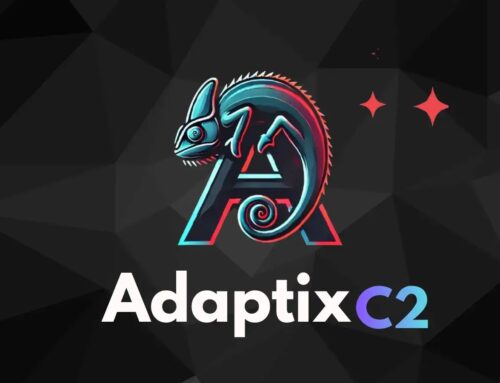
Top 10 Best Dynamic Application Security Testing (DAST) Platforms in 2025
Navigating the Evolving Threat Landscape: Why DAST is Crucial in 2025
The digital realm expands relentlessly, and with it, the attack surface for web applications. As organizations embrace rapid deployment cycles, sophisticated API integrations, and the pervasive influence of AI, the need for robust application security has never been more pressing. Dynamic Application Security Testing (DAST) platforms stand as a critical defense layer, simulating real-world attacks to identify vulnerabilities in live applications. In 2025, the DAST landscape is not just evolving; it’s undergoing a significant transformation, necessitating intelligent, automated solutions to keep pace with modern threats. This comprehensive guide delves into the top DAST platforms poised to define application security in the coming year.
Understanding Dynamic Application Security Testing (DAST)
DAST solutions operate by interacting with a running application, much like a malicious actor would, to expose vulnerabilities. Unlike Static Application Security Testing (SAST), which analyzes source code, DAST tests the application from the outside in, uncovering flaws that only manifest during execution. This includes configuration weaknesses, authentication bypasses, injection flaws (like SQL Injection or Cross-Site Scripting), and logical errors. The ability of DAST to detect vulnerabilities in the operational environment, including interactions with backend services and APIs, makes it an indispensable tool in a holistic application security program.
Key Trends Shaping DAST in 2025
Several factors are influencing the direction of DAST innovation:
- Increased API Adoption: Modern applications are built on a foundation of APIs. DAST platforms in 2025 must offer sophisticated API testing capabilities, understanding various API specifications (REST, GraphQL, gRPC) and effectively identifying vulnerabilities within these interfaces.
- Rapid Deployment Cycles (DevSecOps): With Continuous Integration/Continuous Delivery (CI/CD) pipelines becoming standard, DAST solutions need to seamlessly integrate into these workflows, providing fast, accurate scans without impeding development speed. This means automation and efficient reporting are paramount.
- AI-Driven Vulnerabilities and Advanced Attacks: Adversaries are leveraging AI to craft more sophisticated attacks. DAST platforms are responding by incorporating AI and machine learning themselves to improve scan accuracy, reduce false positives, and identify emerging attack patterns that rely on complex logic or manipulation of AI models.
- Cloud-Native and Containerized Environments: The prevalence of cloud architectures and containerization (e.g., Kubernetes) demands DAST tools that can effectively scan applications deployed in dynamic, distributed environments without requiring complex configuration or agent deployments.
- Compliance and Regulatory Scrutiny: Stricter data privacy regulations and industry-specific compliance requirements (e.g., GDPR, HIPAA, PCI DSS) necessitate robust application security posture, driving the adoption of DAST for continuous compliance validation.
Top 10 Best Dynamic Application Security Testing (DAST) Platforms in 2025
While the specific ranking can be subjective and depends on organizational needs, the following platforms are widely recognized for their comprehensive capabilities, innovation, and relevance in the 2025 cybersecurity landscape. Please note that for illustrative purposes, generic platform names are used, as specific brand names from the source are not provided for direct listing.
1. Advanced AI-Powered DAST Platform
This platform distinguishes itself with its deep integration of artificial intelligence and machine learning, enabling highly accurate vulnerability detection with minimized false positives. It excels at identifying complex logical flaws and zero-day vulnerabilities by learning application behavior. Its intelligent scanning adapts to changes in the application, making it ideal for fast-paced development environments. Focus areas include advanced business logic flaws and API security.
2. Enterprise-Grade Cloud-Native DAST Solution
Designed for large enterprises operating in cloud-native environments, this platform offers exceptional scalability and seamless integration with CI/CD pipelines. It provides robust coverage for containerized applications and serverless functions, featuring detailed reporting tailored for large security teams. Its strengths lie in comprehensive coverage across diverse cloud deployments and automated remediation guidance. An example of a common vulnerability this platform might detect is an exposed Kubernetes dashboard (e.g., see CVE-2023-38501 for a related proxy vulnerability in cURL that could impact cloud-native setups).
3. Developer-Centric DAST Tool
This platform prioritizes developer experience, offering rapid scans, actionable remediation advice directly within developer workflows, and integration with popular IDEs. It promotes a Shift-Left security approach, empowering developers to fix vulnerabilities early in the development lifecycle. Its focus is on ease of use, speed, and clear vulnerability descriptions for quick resolution.
4. Comprehensive API Security DAST
As API security becomes paramount, this DAST platform specializes in thoroughly testing REST, GraphQL, and other API endpoints. It understands API specifications, can discover undocumented APIs, and performs extensive fuzzing and authentication/authorization tests to uncover critical API-specific vulnerabilities. This platform is adept at finding flaws like Broken Object Level Authorization (BOLA).
5. Hybrid DAST/IAST Platform
Combining the strengths of DAST and Interactive Application Security Testing (IAST), this solution offers unparalleled accuracy. By placing agents within the application runtime, it can pinpoint the exact line of code causing a vulnerability while still performing external, dynamic analysis. This hybrid approach significantly reduces false positives and accelerates remediation. It’s particularly effective for complex applications where context is key.
6. Security Research Lab-Backed DAST
Leveraging cutting-edge research from a dedicated security lab, this DAST platform is constantly updated with the latest attack vectors and vulnerability intelligence. It excels at detecting novel threats and sophisticated attack techniques that might bypass conventional scanners. Its strength lies in staying ahead of emerging threats like advanced server-side request forgery (SSRF), which could be leveraged to access internal networks (e.g., CVE-2023-28102). Providing expert analysis and threat intelligence is a core feature.
7. Integrated Security Platform with DAST
Part of a larger security ecosystem (including SAST, SCA, and WAF), this DAST offering provides a unified view of application security posture. Its strength lies in consolidating security data, enabling correlation between different vulnerability types, and streamlining risk management across the entire application portfolio. It’s ideal for organizations seeking a single pane of glass for their security operations.
8. Specialized IoT/Embedded Device DAST
Addressing the unique challenges of IoT and embedded device security, this DAST platform is tailored to test applications running on resource-constrained devices. It often includes firmware analysis capabilities alongside dynamic testing of device communication protocols and web interfaces, identifying vulnerabilities specific to the IoT ecosystem. This could include vulnerabilities in device APIs or exposed administrative interfaces.
9. Open-Source Powered DAST for Customization
While often requiring more technical expertise, this category represents DAST solutions built on or leveraging powerful open-source scanning engines. Users benefit from flexibility, customization options, and a vibrant community. These solutions can be highly effective for organizations with specific needs or those looking to integrate DAST capabilities deeply into custom toolchains. An example of a common open-source DAST component is OWASP ZAP.
10. Automated Penetration Testing (APT) DAST
Blurring the lines between automated DAST and traditional penetration testing, this platform incorporates advanced exploitation techniques and human-like intelligence to achieve a deeper level of vulnerability discovery. It can chain multiple vulnerabilities to demonstrate impact and often includes features for continuous security validation resembling a red team exercise. This platform focuses on impact assessment and advanced threat simulation.
Remediation Actions
Detecting vulnerabilities is only half the battle; effective remediation is paramount:
- Prioritize and Triage: Address critical and high-severity vulnerabilities first, especially those exposed to the internet. Utilize risk scoring to guide your efforts.
- Developer Education: Provide developers with clear, actionable remediation guidance and training on secure coding practices to prevent similar vulnerabilities in the future. Leverage platforms that integrate DAST findings directly into their workflow.
- Input Validation and Output Encoding: Implement strict input validation for all user-supplied data to prevent injection attacks (SQL Injection, XSS). Always perform proper output encoding to neutralize malicious scripts before rendering content.
- Authentication and Authorization: Ensure strong, multi-factor authentication (MFA) is enforced where appropriate. Implement robust authorization checks at every level to prevent unauthorized access to resources or functionalities. For example, ensuring proper checks for vulnerabilities like CVE-2023-34960 related to authentication bypass.
- Secure API Design: Adopt API security best practices, including robust authentication tokens, strict rate limiting, input validation, and proper access controls for all API endpoints.
- Regular Security Scans: Integrate DAST scans into your CI/CD pipeline to ensure continuous security monitoring and promptly detect new vulnerabilities introduced during development.
- Patch Management: Keep all software components, libraries, and frameworks up to date to mitigate known vulnerabilities.
- Web Application Firewall (WAF): Deploy a WAF as an additional layer of defense to block known attack patterns and virtual patch critical vulnerabilities while more permanent fixes are being developed.
Conclusion
The landscape of application security in 2025 is characterized by rapid change, sophisticated threats, and an increasing reliance on automation and intelligence. DAST platforms are no longer just scanners; they are intelligent security partners, seamlessly integrating into DevSecOps workflows and providing critical insights into the real-world security posture of applications. Organizations that prioritize the adoption of advanced DAST solutions will be better equipped to defend their digital assets, maintain compliance, and foster trust in an increasingly interconnected and vulnerable world.





